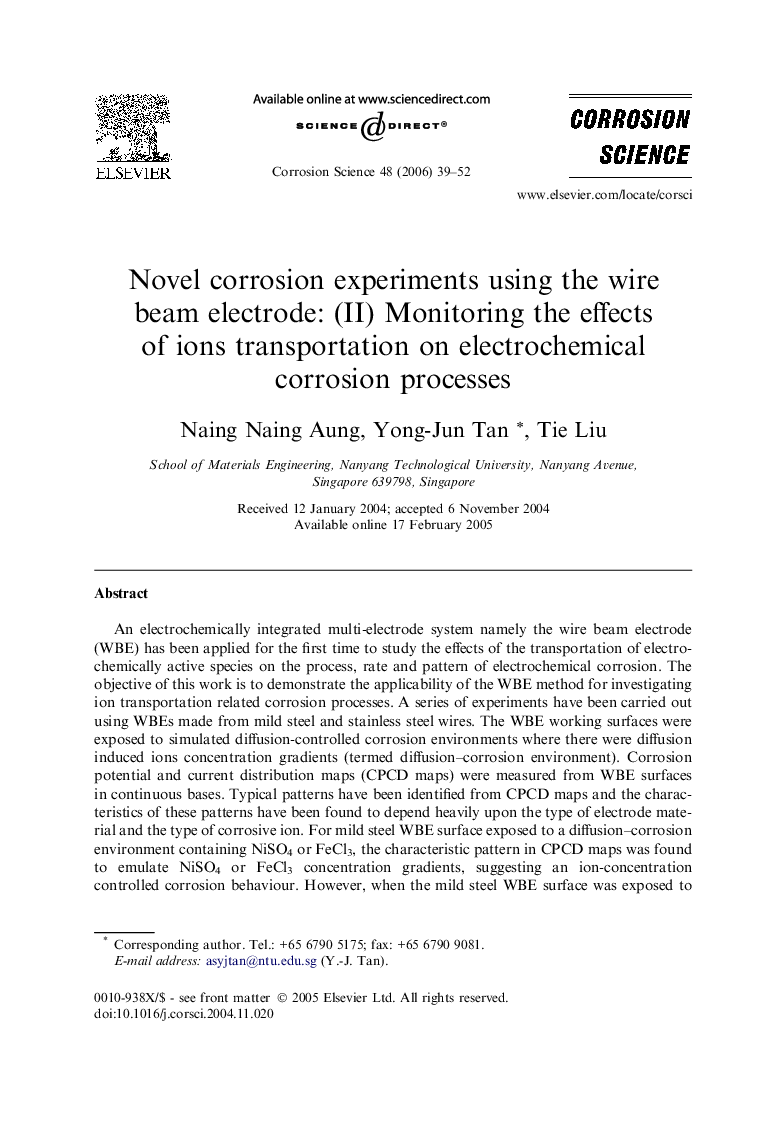| Article ID | Journal | Published Year | Pages | File Type |
|---|---|---|---|---|
| 1472027 | Corrosion Science | 2006 | 14 Pages |
An electrochemically integrated multi-electrode system namely the wire beam electrode (WBE) has been applied for the first time to study the effects of the transportation of electrochemically active species on the process, rate and pattern of electrochemical corrosion. The objective of this work is to demonstrate the applicability of the WBE method for investigating ion transportation related corrosion processes. A series of experiments have been carried out using WBEs made from mild steel and stainless steel wires. The WBE working surfaces were exposed to simulated diffusion-controlled corrosion environments where there were diffusion induced ions concentration gradients (termed diffusion–corrosion environment). Corrosion potential and current distribution maps (CPCD maps) were measured from WBE surfaces in continuous bases. Typical patterns have been identified from CPCD maps and the characteristics of these patterns have been found to depend heavily upon the type of electrode material and the type of corrosive ion. For mild steel WBE surface exposed to a diffusion–corrosion environment containing NiSO4 or FeCl3, the characteristic pattern in CPCD maps was found to emulate NiSO4 or FeCl3 concentration gradients, suggesting an ion-concentration controlled corrosion behaviour. However, when the mild steel WBE surface was exposed to a diffusion–corrosion environment containing NaCl, the characteristic pattern was found to show higher cathodic currents along the WBE edges with the magnitude decreasing in a contour-like manner towards the centre of the WBE surface, suggesting an oxygen concentration-controlled corrosion behaviour. When a stainless steel (SS316L) WBE surface was exposed to a diffusion–corrosion environment containing NiSO4 or NaCl, the corrosion pattern appeared to be mainly determined by the random distribution of weak sites in passive film. When the SS316L WBE was exposed to a diffusion–corrosion environment containing FeCl3, the CPCD map revealed a characteristic pattern that shows localised damage to passive film. This work demonstrates that the recognition and analysis of characteristic maps from WBE measurements can be used as a means of studying diffusion, migration and other forms of mass transportation related electrochemical corrosion processes.
